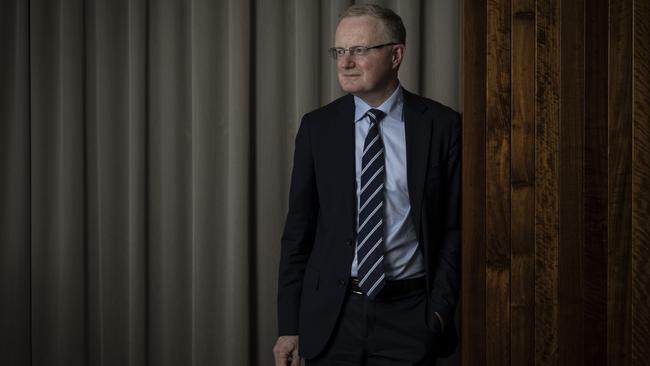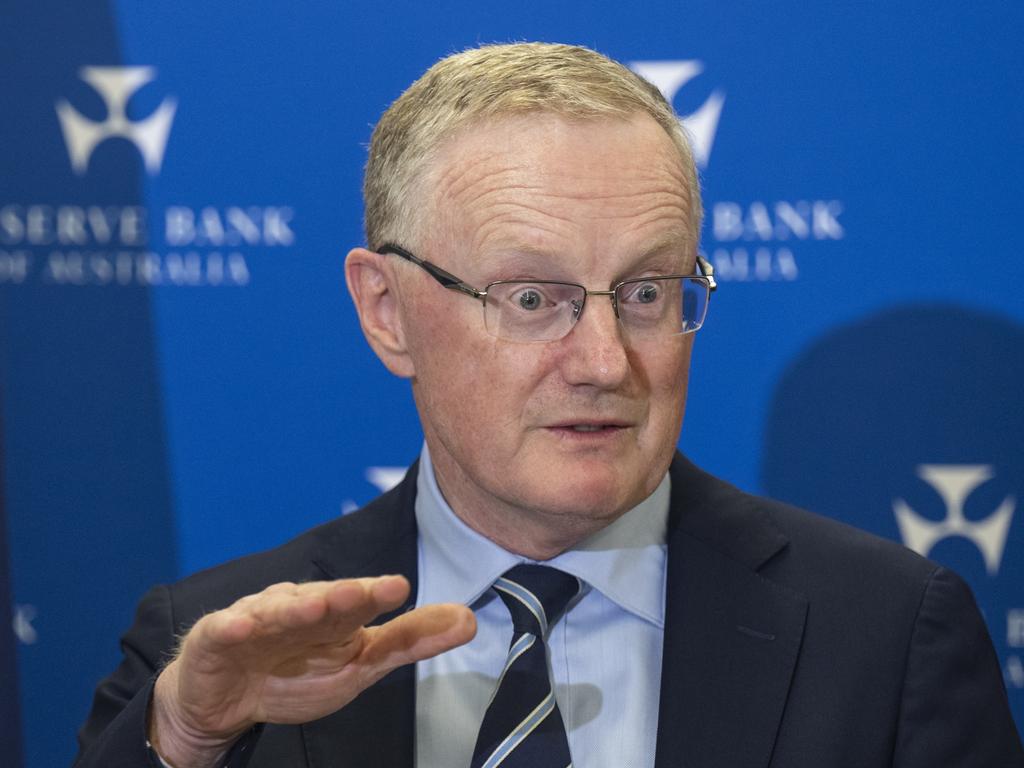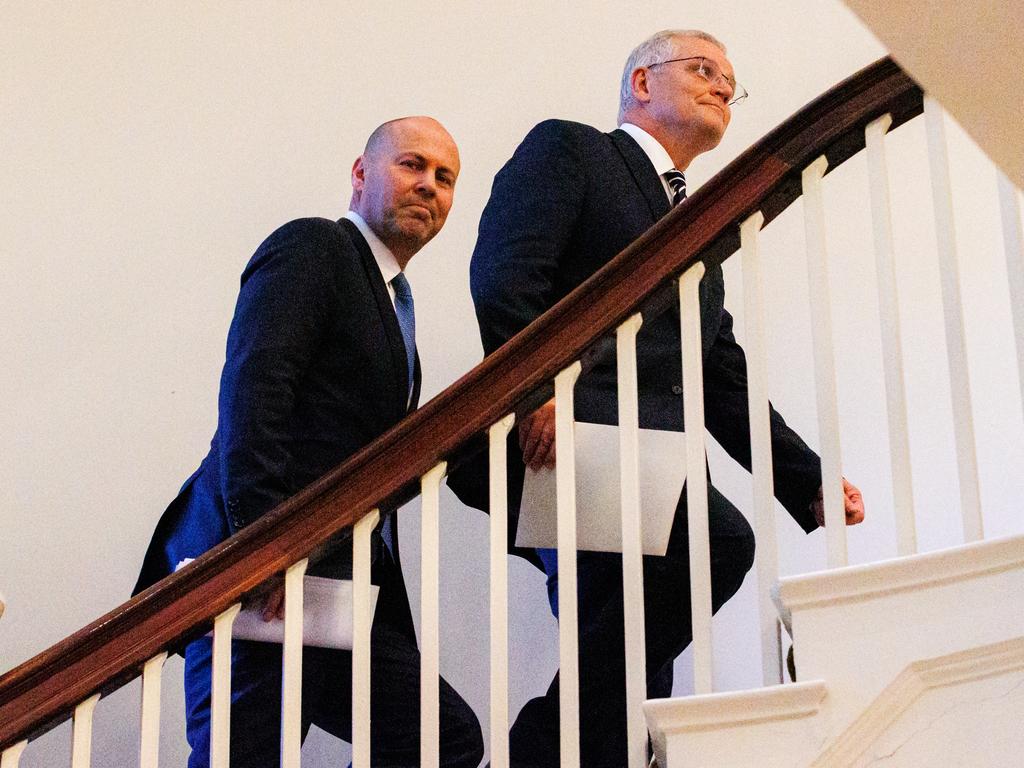RBA acts: ultra-low era comes to an end
The official cash rate could reach 2.5pc next year after Philip Lowe said ‘emergency’ monetary policy settings were ending in response to rising inflation.

Borrowers face a string of rate rises that could see the official cash rate reach 2.5 per cent by the end of next year after Reserve Bank governor Philip Lowe said “emergency’’ monetary policy settings were ending in response to rising inflation and the lowest unemployment in 50 years.
The RBA decision on Tuesday to lift the cash rate by 25 basis points from 0.1 to 0.35 per cent will add about $85 to the monthly repayment on a $600,000 mortgage assuming the banks pass on each hike in full.
Labor seized on the rate rise to attack the government’s economic management record but this was rebuffed by Moodys Analytics, which said the reason rates were increased was because the economy was strong enough to stand on its own after two years of unprecedented pandemic support.
The Commonwealth Bank was the first major lender to increase its variable home loan rate by 25 points to 4.8 per cent for owner-occupiers. It was followed by ANZ which lifted its variable home loan rate by the same margin, taking the standard variable rate of owner occupiers to 4.64 per cent. Westpac increased home loan variable interest rates and select consumer deposit accounts by 0.25 per cent.
The RBA’s rate rise decision was backed by an optimistic 4.25 per cent economic growth forecast for 2022 and expectations that the unemployment rate will fall to 3.5 per cent by the end of the year.
Marking only the second time in history that the RBA has hiked rates during a federal election campaign, Dr Lowe said the decision to increase the cash rate for the first time since 2010 was “in the best interests of the country” and “without any interference from politics”.
Scott Morrison said Australia was “coming out of this pandemic stronger than most of the advanced economies in the world today” and that the election was now about “the future of our economy”.
Reminding Australians that Anthony Albanese did not know the official cash rate or unemployment rate just three weeks ago, the Prime Minister said there were “few places that people would rather be than right here in Australia”.
“At a time like this, as we get closer to this election, why risk it? Why go in another direction? Now is not the time to turn back,” Mr Morrison said.
Mr Albanese and his Treasury spokesman Jim Chalmers said the rate hike would make it “even harder for millions of Australians” coping with higher food, rent and petrol prices. Asked how Labor would manage higher inflation and rate increases, they pointed to ALP promises to decrease childcare and electricity costs.
“Scott Morrison’s economic credibility was already tattered and now it is completely shredded,” Dr Chalmers said. “This is a full-blown cost-of-living crisis on Scott Morrison’s watch.”
Dr Chalmers expressed concern that the RBA expected the economy to grow by only 2 per cent next year, describing the forecast as “well below average” and “nowhere near what Australia needs if we are to prosper”.
But Moody’s Analytics senior economist Katrina Ell rejected Labor’s attack on the Coalition.
“Incorrectly, the most recent hike in the cash rate has already been politicised by the Labor opposition as an indictment on the Coalition’s economic management. But this is not accurate,” Ms Ell said. “May’s rate hike is in response to the Australian economy being able to increasingly stand on its own after the unprecedented support that was offered during the pandemic.”
Despite soaring oil prices, the war in Ukraine and ongoing Covid-19 supply chain disruptions, Dr Lowe said he had been caught off guard by the strength of inflation in the first three months of the year and had been forced to raise rates sooner than anticipated. Dr Lowe conceded the Reserve Bank had made an “embarrassing” error in its rates forecasts and flagged the RBA would review its internal forward guidance processes. with a report later this year.
“At the time, we thought it was going to be necessary after 2024,” he said. “So that was our mindset. Thankfully, we were wrong. The economy has been much better. The unemployment rate has come down, the economy has been strong.
“From a forecasting perspective, that’s embarrassing. We should have forecasted this better; we didn’t But what we did do in 2020 was make sure we took every possible step that we could take to help the country.”
Dr Lowe said the outlook for economic growth remained positive and wages growth was picking up, blunting the Opposition Leader’s election attack on the Prime Minister for holding back the economy and workers’ salaries. “Each month we talk to many, many businesses,” Dr Lowe said. “In the past few months there has been a very marked shift: most firms used to say 2-2.5 per cent. Now roughly 40 per cent are saying they are going to pay wage rises of 3 per cent, and a number of firms are saying they will pay (wage increases of) more than 3 per cent.
“Wages growth in Australia is finally picking up. For too long it has been stuck in the 2s. Now it’s into the 3s, and in some cases, where labour is in short supply, into the 4s.
“The time for emergency settings for interest rates is over.”
Ahead of the release of Friday’s statement on monetary policy, Dr Lowe revealed he expected inflation to reach 6 per cent in 2022 – up from 5.1 per cent over the year to March and almost double the 3.25 per cent rate he predicted in February.
The RBA’s preferred measure of underlying inflation is forecast to hit 4.75 per cent by December – well above the upper end of the bank’s 2-3 per cent target, and against the 2.75 per cent predicted three months earlier.
Mr Morrison said he was concerned about mortgage repayments increasing, but argued the government had taken “practical action” in the budget to shield Australians from rising cost-of-living pressures. On Wednesday, the government will announce another cost-of-living measure, freezing record low deeming rates for two years so that 900,000 age pensioners and welfare recipients can continue to pocket up to $1300 a year.
Business groups hailed the change in monetary policy settings as a sign the emergency pandemic measures were coming to an end, with BCA chief executive Jennifer Westacott saying the RBA had “drawn a line under two years of emergency pandemic settings”. She argued government action had helped to ease cost-of-living pressures in the short term and “delivered relief to struggling Australians”. But Ms Westacott warned that managing this challenge over the medium term would require greater efforts to “make the switch to a private sector-led recovery”.
Australian Industry Group chief executive Innes Willox said most businesses would have baked in higher rates in borrowing and investment decisions.







To join the conversation, please log in. Don't have an account? Register
Join the conversation, you are commenting as Logout